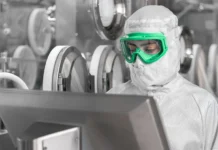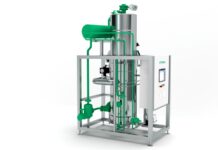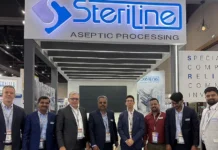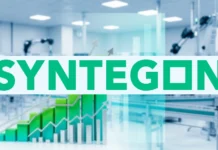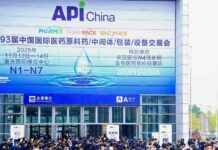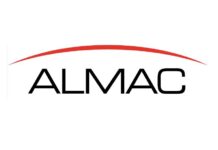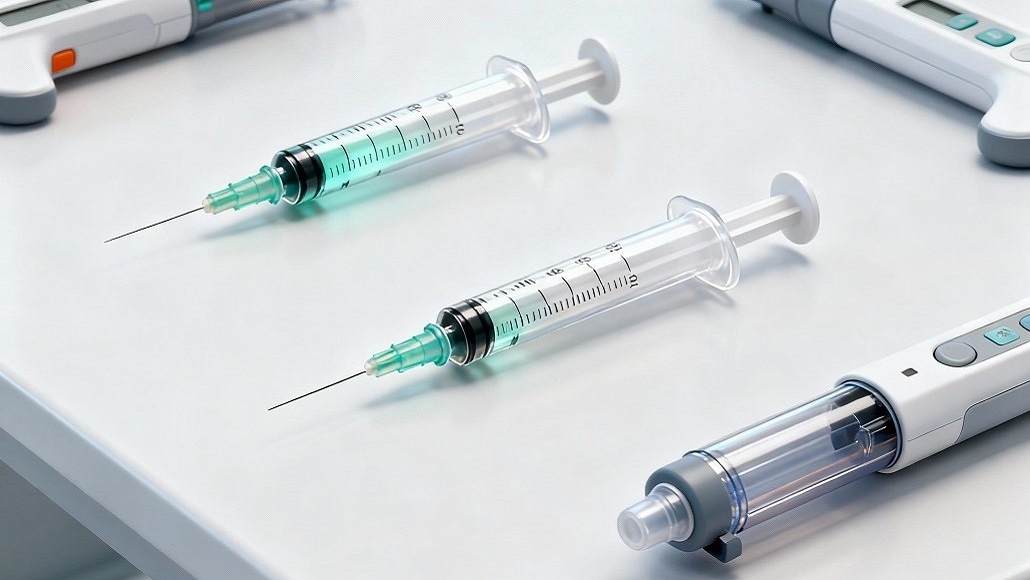Innovations in Injectable and Parenteral Drug Delivery Systems
The evolution of injectable drug delivery systems marks a transformative period in pharmaceutical therapeutics, where technological sophistication converges with patient-centered design to revolutionize how medications reach their targets. Global market valuations exceeding $690 billion in 2025, with projections approaching $1 trillion by 2030, reflect not merely market expansion but fundamental shifts in therapeutic approaches, chronic disease management, and precision medicine delivery. Injectable drug delivery systems now encompass far more than traditional syringes and needles, incorporating smart technologies, wearable devices, and advanced formulations that enhance safety, precision, and patient experience.
The Expanding Scope of Parenteral Delivery
Parenteral administration, encompassing any route that bypasses the gastrointestinal tract, offers distinct advantages that make it indispensable for modern therapeutics. Complete bioavailability eliminates concerns about first-pass metabolism, variable gastrointestinal absorption, or food-drug interactions that complicate oral delivery. Rapid onset of action proves critical for emergency situations, acute conditions, or circumstances requiring immediate therapeutic intervention. For biologics including monoclonal antibodies, vaccines, and gene therapies, parenteral delivery often represents the only viable administration route given their susceptibility to gastrointestinal degradation.
The rising prevalence of chronic diseases including diabetes, cancer, autoimmune disorders, and cardiovascular conditions drives sustained growth in injectable drug delivery systems. Diabetes alone affects hundreds of millions globally, with insulin delivery representing one of the largest segments of the injectable market. Oncology applications continue expanding as targeted biologics and immunotherapies demonstrate superior efficacy compared to traditional chemotherapeutics, necessitating specialized delivery systems that ensure precision dosing and minimize adverse effects.
The biologics revolution fundamentally altered pharmaceutical development trajectories, with therapeutic proteins, monoclonal antibodies, and antibody-drug conjugates dominating pipelines of major pharmaceutical companies. These complex molecules typically cannot be administered orally due to degradation by digestive enzymes and poor permeability across intestinal epithelium. Injectable drug delivery systems provide the infrastructure enabling translation of biological discoveries into therapeutic realities, serving as essential enablers of precision medicine approaches.
Advanced Delivery Platforms Transforming Patient Care
Prefilled syringes represent a pivotal innovation addressing multiple challenges simultaneously. These ready-to-use systems arrive preloaded with precise drug doses, eliminating manual filling steps that introduce opportunities for dosing errors, contamination, or handling mistakes. Healthcare professionals and patients benefit from improved accuracy, as premeasured dosages remove uncertainties associated with drawing medications from vials. Convenience proves particularly valuable in emergency situations where rapid administration can save lives, as prefilled syringes enable immediate injection without preparation delays.
The safety advantages of prefilled syringes extend beyond dosing accuracy. Reduced needle stick injuries protect healthcare workers from accidental exposure to hazardous substances, while single-use designs minimize contamination risks compared to multi-dose vials. Pharmaceutical manufacturers achieve cost benefits through reduced overfill requirements, as prefilled systems eliminate the waste associated with vial filling where excess product ensures adequate extractable volumes. For expensive biologics where manufacturing capacity is limited and production costs are substantial, minimizing overfill generates significant economic advantages.
Material science advances have enhanced prefilled syringe performance, with cyclic olefin copolymers and cyclic olefin polymers offering superior chemical resistance, dimensional stability, and transparency compared to traditional glass syringes. These advanced materials reduce extractables and leachables that could compromise drug stability or patient safety, while maintaining the visibility needed for visual inspection. Coatings and surface treatments further optimize performance by reducing friction, preventing protein adhesion, and enhancing glide force characteristics.
Autoinjectors bring sophisticated engineering to self-administration, transforming complex injection procedures into simple, intuitive actions suitable for patients with minimal training. These devices incorporate spring mechanisms, gas-powered systems, or electronic actuators that automatically control needle insertion depth, injection speed, and dosing accuracy. Ergonomic designs accommodate patients with limited dexterity, visual impairments, or other physical challenges that would make conventional syringes difficult to use properly.
The psychological benefits of autoinjector technology should not be underestimated. Needle phobia affects substantial portions of patient populations, potentially leading to treatment avoidance or poor adherence. Autoinjectors that conceal needles, provide audio or visual feedback confirming successful injection, and minimize pain through optimized needle insertion reduce anxiety associated with self-injection. These human factors considerations translate to improved treatment adherence and better clinical outcomes.
Long-Acting Injectable Formulations
Long-acting injectables address the challenge of maintaining therapeutic drug concentrations over extended periods, reducing administration frequency from daily or weekly injections to monthly, quarterly, or even biannual dosing. This paradigm shift proves particularly valuable for chronic conditions requiring continuous therapy, as reduced injection frequency dramatically improves patient convenience and adherence while potentially reducing healthcare system burdens associated with frequent clinic visits.
Depot formulations achieve prolonged release through multiple mechanisms. Aqueous suspensions of drug microcrystals provide simple yet effective approaches, with dissolution rate governing release kinetics. Particle size distribution critically influences release profiles, as smaller particles dissolve more rapidly while larger crystals provide extended duration. Manufacturing processes including wet milling and jet pulverization precisely control particle characteristics, enabling tailoring of release profiles to match therapeutic requirements.
Oil-based solutions represent another long-acting injectable approach, dissolving drugs or prodrugs in pharmaceutical oils that form depot sites after intramuscular injection. Drug gradually partitions from the oil phase into surrounding tissues and ultimately systemic circulation, with release rate determined by drug solubility, oil viscosity, and tissue perfusion. This approach offers simplicity and cost-effectiveness while providing release durations spanning weeks to months depending on formulation composition.
Biodegradable polymer microspheres utilizing poly(lactic-co-glycolic acid) enable sophisticated control over release kinetics. Drug encapsulated within polymer matrices undergoes initial release from surface-associated material, followed by bulk erosion-controlled release as polymer degrades through hydrolytic cleavage. Varying polymer composition, molecular weight, and microsphere size modulates release duration from weeks to months, providing formulation scientists with extensive design flexibility. The biocompatibility and regulatory acceptance of poly(lactic-co-glycolic acid) facilitate development, though manufacturing complexity and expense represent considerations in product development.
In situ forming implants offer advantages of both injectable administration and implant functionality. These systems remain liquid during injection but solidify after administration through mechanisms including solvent exchange, temperature-triggered gelation, or pH-responsive precipitation. The resulting depot provides sustained release while avoiding surgical implantation procedures required for conventional implants. Recent formulation advances have addressed challenges including injection site reactions, incomplete drug release, and limited dose capacity that previously constrained clinical application.
Wearable Injectors and Connected Devices
Wearable injectors represent convergence of pharmaceutical delivery with digital health technologies, enabling administration of large-volume or high-viscosity formulations through on-body devices worn during controlled infusion periods. These systems prove particularly valuable for biologics requiring subcutaneous delivery volumes exceeding the approximately 2 milliliter limit of conventional syringes, or for formulations with viscosities that would cause excessive injection pain if administered rapidly.
The operational principle involves a compact, lightweight device adhered to the patient’s skin, typically on the abdomen or thigh. Pre-programmed infusion profiles deliver medication over periods ranging from minutes to hours, with adjustable parameters accommodating different therapeutic requirements. Patients maintain mobility during infusion, enhancing quality of life compared to clinic-based intravenous infusions that require extended facility time and restrict activities.
Smart features elevate wearable injectors beyond simple delivery devices into components of comprehensive digital health ecosystems. Connectivity capabilities enable real-time data transmission to smartphones, cloud-based platforms, and healthcare provider systems. Adherence monitoring confirms successful dose administration, providing objective evidence valuable for clinical management and outcomes research. Electronic tracking of injection timing, location, and completion status supports complex dosing regimens while alerting patients and providers to missed doses or device malfunctions.
Integration with artificial intelligence and machine learning algorithms promises to optimize therapy through analysis of adherence patterns, identification of factors associated with successful treatment outcomes, and predictive modeling of individual patient responses. These data-driven approaches enable personalized dosing adjustments, proactive intervention for patients at risk of non-adherence, and continuous quality improvement in device design and patient support programs.
High-Concentration Formulation Challenges
The therapeutic demand for high-concentration protein formulations, driven by requirements for large doses and preference for subcutaneous administration with volume constraints, presents formidable technical challenges. Protein concentrations exceeding 100 milligrams per milliliter introduce substantial formulation complexity related to viscosity, stability, and injectability.
Viscosity represents the primary obstacle, as concentrated protein solutions exhibit dramatic increases in resistance to flow. High viscosity complicates manufacturing operations including filling, limits injection speed, and causes pain at injection sites due to tissue deformation during administration. The molecular mechanisms underlying viscosity elevation in concentrated protein solutions involve protein-protein interactions, with electrostatic forces, hydrophobic interactions, and excluded volume effects all contributing to solution non-ideality.
Formulation strategies to manage viscosity include pH optimization to minimize electrostatic protein-protein attractions, addition of salts or amino acids that shield charges and reduce interactions, and incorporation of surfactants that modulate protein-protein and protein-surface interactions. Recent innovations employ computational modeling to predict viscosity behavior and guide formulation development, accelerating optimization compared to purely empirical approaches.
Protein aggregation risks escalate at high concentrations, as proximity increases collision frequency and opportunities for intermolecular interactions leading to aggregate formation. Aggregates compromise product quality, potentially reducing efficacy while increasing immunogenicity risks. Stabilization strategies preventing aggregation include selection of appropriate buffering systems, incorporation of excipients such as sugars or polyols that preferentially hydrate protein surfaces, and minimization of exposure to interfaces and stress conditions during manufacturing and storage.
Needle-Free Injection Technologies
Needle-free injectors utilize alternative mechanisms to deliver medications through skin without conventional needles. Jet injection systems employ high-velocity liquid streams that penetrate skin through shear force, depositing medication into subcutaneous or intramuscular tissues. These devices offer advantages including elimination of needle phobia, avoidance of needle stick injuries, and potential for rapid mass vaccination campaigns where speed and safety are paramount.
Microneedle technologies represent a distinct approach, employing arrays of microscopic projections that penetrate only the outermost skin layers, avoiding nerve endings and blood vessels that cause pain. Solid microneedles coated with drug formulations, hollow microneedles that deliver liquid formulations, and dissolving microneedles fabricated from soluble materials that dissolve after insertion all demonstrate clinical potential. The minimally invasive nature reduces pain and fear while enabling self-administration that would be challenging with conventional syringes.
Emerging technologies including ultrasound-mediated delivery, iontophoresis, and electroporation offer non-invasive alternatives for specific applications. Ultrasound temporarily disrupts skin barrier functions through cavitation and thermal effects, enhancing transdermal drug transport. Iontophoresis employs electrical currents to drive charged drug molecules through skin, while electroporation creates transient pores in cell membranes through brief high-voltage pulses. These approaches remain investigational for most applications but hold promise for expanding routes available for parenteral drug delivery.
Manufacturing Innovation and Quality Assurance
Aseptic manufacturing represents a cornerstone of injectable drug production, ensuring sterility throughout processing without relying solely on terminal sterilization that may damage heat-sensitive or radiation-sensitive products. Closed system technologies minimize human intervention and environmental exposure, reducing contamination risks. Advanced environmental monitoring, real-time particle counting, and rapid microbiological methods provide assurance of sterility while enabling faster release compared to traditional culture-based testing.
Continuous manufacturing principles are increasingly applied to injectable production, offering advantages including improved process control, reduced facility footprint, and elimination of scale-up challenges associated with batch processing. Integration of in-line analytical technologies enables real-time quality monitoring and process adjustment, ensuring consistent product attributes across production runs. These manufacturing advances prove particularly valuable for personalized medicine applications requiring flexible, responsive production capabilities.
Sterilization technology continues advancing beyond traditional approaches. Supercritical carbon dioxide sterilization, electron beam irradiation, and vapor-phase hydrogen peroxide offer alternatives to heat or gamma radiation for materials and products incompatible with conventional methods. The selection of appropriate sterilization approach balances efficacy requirements against product stability concerns, regulatory acceptance, and economic considerations.
Combination Products and Device-Drug Integration
Combination products integrating drugs with delivery devices represent growing segments of the injectable market, offering advantages through optimized compatibility between formulation and device while simplifying supply chains and reducing potential for medication errors. Pharmaceutical companies increasingly partner with device manufacturers early in development to ensure seamless integration, as formulation characteristics including viscosity, surface tension, and particulate content significantly impact device performance.
The regulatory pathway for combination products involves coordination between drug and device review divisions, requiring integrated quality systems addressing both pharmaceutical and device aspects. Quality by design principles applied to combination product development systematically identify critical quality attributes, establish design spaces, and implement control strategies ensuring consistent product performance throughout shelf life.
Patient human factors studies constitute essential components of combination product development, evaluating whether intended users can successfully operate devices under realistic conditions. These studies identify design flaws, user errors, or instructions requiring clarification before products reach market, preventing use errors that could compromise safety or efficacy.
Future Horizons in Injectable Delivery
The trajectory of injectable drug delivery systems points toward increasingly sophisticated technologies addressing evolving therapeutic needs. Implantable devices with controlled release capabilities, refillable reservoirs, or responsive release mechanisms triggered by physiological signals promise to extend delivery beyond current long-acting formulations. Integration with continuous glucose monitors, activity trackers, and other health monitoring devices enables closed-loop systems where drug delivery automatically adjusts based on real-time physiological data.
Targeted delivery systems employing ligand-decorated nanoparticles, cell-specific antibodies, or stimuli-responsive release mechanisms aim to concentrate drug action at disease sites while minimizing systemic exposure and side effects. These approaches prove particularly promising for oncology applications where the therapeutic index of cytotoxic agents limits dosing, and for rare diseases where patient populations are small but therapeutic needs are significant.
Conclusion
Innovations in injectable drug delivery systems encompass technological advances, formulation sophistication, and patient-centered design converging to enhance therapeutic outcomes across disease areas. From prefilled syringes simplifying administration to wearable injectors enabling home-based biologic therapy, from long-acting formulations reducing dosing frequency to smart devices monitoring adherence, the injectable delivery landscape continuously evolves to meet clinical needs. As biologics dominate pharmaceutical pipelines and precision medicine approaches become standard of care, injectable drug delivery systems will remain at the forefront of enabling technologies translating scientific discoveries into improved patient outcomes.







